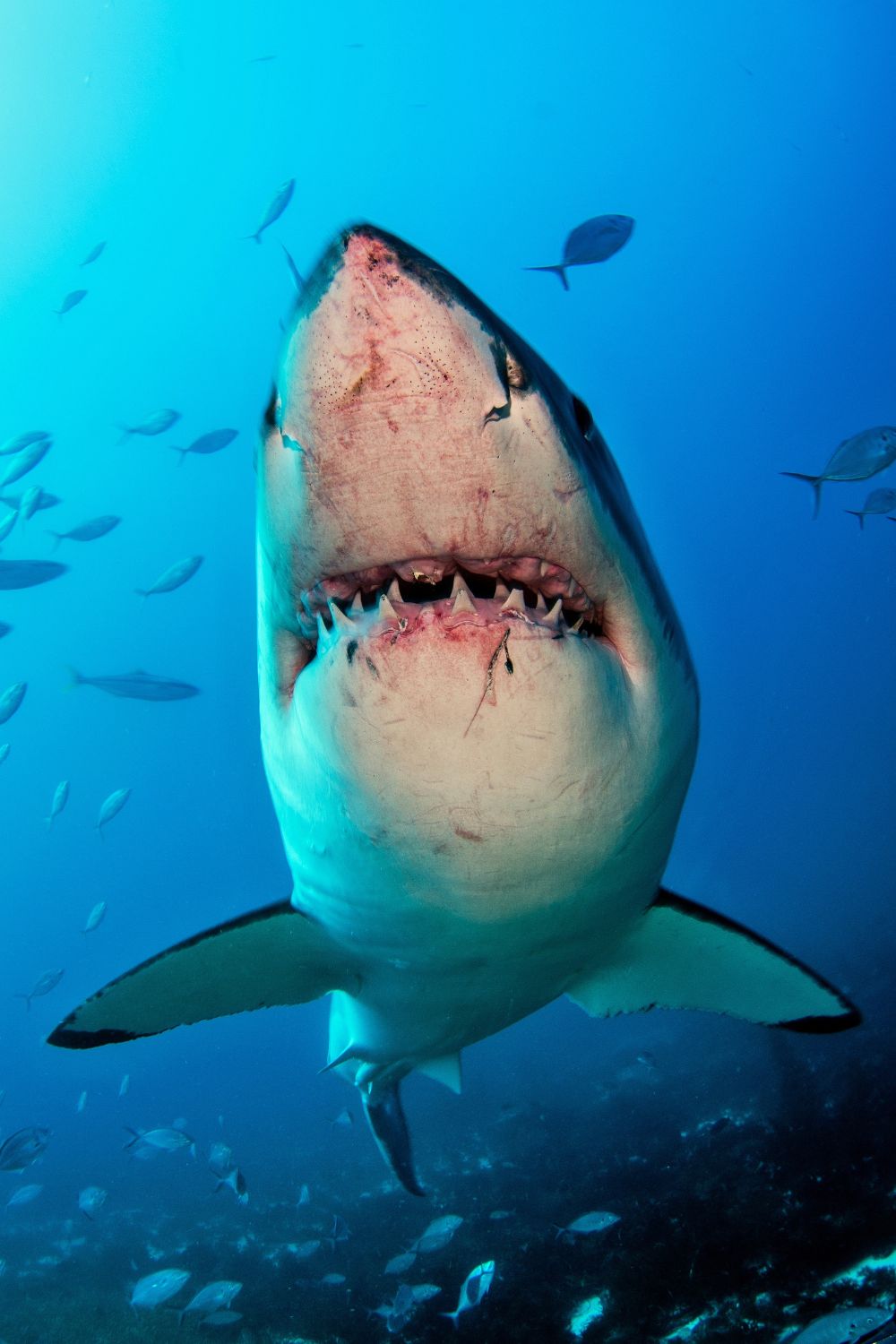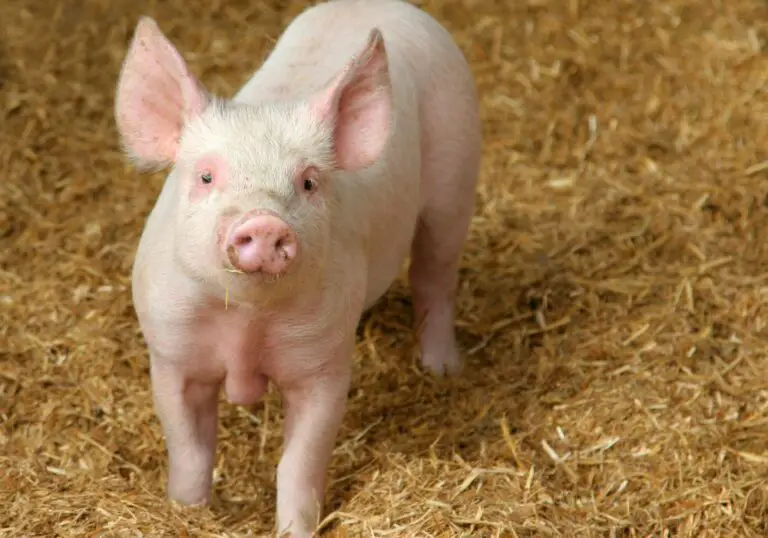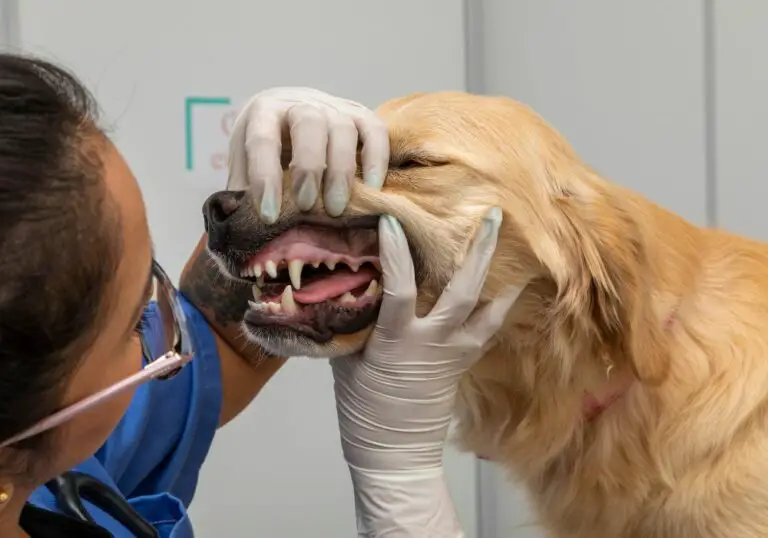Sharks are beautiful, elegant creatures that are perfectly adapted to their habitats and that glide around gracefully below the surface of the oceans – but despite the rarity of shark attacks on humans, they’re still the stuff of nightmares for a sizeable proportion of people.
Perhaps the most terrifying and notorious of all shark species is the great white, a shark that sometimes exceeds 20 feet in length – and in this post, we examine this shark’s fearsome reputation as we answer the question, how many teeth does a great white shark have?
How Many Teeth Does a Great White Shark Have? Not as many as you might think!
The central question of this post might seem quite straightforward, but it’s not so easy to give a simple answer because there are several factors that complicate matters somewhat.
If you ever have the opportunity to have a close look inside the mouth of a great white, you may notice that they have one row of primary upper teeth and one row of primary lower teeth.
If the shark then gives you enough time, you’ll be able to count them – and you’ll probably be able to see around 28 teeth on the top and about 25 on the bottom, for a total of something just above 50.
So one answer to our question could be that a great white shark has about 50 teeth.
But then if you look a little closer, deeper into the shark’s mouth, you’ll be able to spot several other rows of supplementary teeth.
This is because great white sharks constantly lose their teeth, and these are replaced by new ones that grow behind the main teeth and move forward to replace the old teeth as they are lost.
Great white sharks may have five or six rows of these replacement teeth in various stages of development, and if we assume that each row contains another 50 teeth, that gives us a total of about 300.
So a second possible answer could be that great white sharks have about 300 teeth in their mouths at any one time.
How Many Teeth Does a Great White Shark Have during their lifetime?

When we say that a great white shark has around 50 primary teeth and a mouthful of about 300 teeth in total, we’re on fairly safe ground since we can count them.
However, if we want to say how many teeth a great white gets through during its lifetime, things become far more uncertain since there are several variables we simply don’t have accurate numbers for.
If we want to estimate how many teeth a great white has during its lifetime, there are two important things we need to know, namely, how long they live and how many teeth they get through in a week, a month or a year.
In terms of lifespan, it was once believed that great whites lived around 30 years, but nowadays, we’re fairly certain that males don’t even reach sexual maturity before around 26 years – and for females, it is even later, at 33.
This means it’s likely they can reach much older ages, and it’s now thought that 70 is a better estimate.
However, the second part of this is much harder to estimate because nobody has ever really been able to study it.
Think about it, keeping track of exactly how many teeth an adult great white in the wild loses over a particular period is not an easy experiment to conduct!
So can we guess?
Despite the difficulties in calculating the rate of tooth loss in great whites, some people have estimated that they can get through about 30,000 teeth in their lifetime.
However, others have pointed out how much of a wild guess numbers like these really are.
For another estimate of how many teeth they get through in a lifetime, you can also watch this video.
Nevertheless, whichever number you believe, it seems that great whites lose their teeth easily and often, so one thing we can say for certain is that a great white gets through a lot of teeth during its life!
What are great whites’ teeth like and how do they use them?
Although many people’s idea of the great white is mainly derived from Steven Spielberg’s 1975 movie Jaws – and we could hardly write a post about great whites without mentioning this film at least once! – in reality, they’ve been largely misrepresented.
Great whites aren’t insatiable man-eaters that like nothing more than sinking their teeth into human flesh, actively hunting us down the moment we step foot into the water.
However, one thing’s for sure and that’s that photos of great whites with their mouths open and their teeth bared portray a terrifying predator that few people want to come face to face with in real life.
Those rows of sharp, pointed teeth certainly look intimidating, and they’re even scarier when you look closer.
Each fully-developed tooth is about two inches long, and more than this, they all have serrated edges like steak knives – the Latin name for the great white is Carcharodon carcharias, and the first part of this name is taken from the Ancient Greek for “serrated tooth”.
Coupled with this fearsome dentition is an incredibly powerful bite, and after a great white chomps down on a victim, it then shakes its head vigorously from side to side, causing those serrated teeth to saw off great chunks of meat.
Then if the shark likes the taste of what it’s found, it will come back at its leisure and tear off another chunk from the now dying animal in a similar fashion.
Here’s a video that shows you the awesome power of a great white’s bite.
What do great whites eat?
Great whites’ diets vary depending partly on where they live but also to a large extent on how old they are.
When they are born, they measure around four feet in length, and at this age, they mainly eat fish, rays and other smaller sharks.
As they grow, they begin to take larger prey, but until they reach around 10 feet, they still stick to fish. It’s thought this is because, although adults have a huge bite force, before they reach this age, their jaws are still too weak to withstand the pressure their bite exerts.
As a result, before this age, they can’t eat foods like marine mammals or sea turtles.
However, by the time they reach 10 feet, their jaws will have mineralized enough for them to withstand the force required to bite through bone or shell.
From this time on, they begin to focus more on pinnipeds – the group of animals that includes the various species of seals and sea lions – and by the time they reach about 13 feet, marine mammals such as these make up the majority of their diet.
Finally, when great whites reach above 16 feet, becoming some of the largest specimens in the ocean, it is thought that they rely increasingly on scavenging whale carcasses since they no longer have the agility to catch seals.
Do great whites hunt humans?
Despite what popular culture tells us about great whites, they aren’t particularly partial to humans, and they don’t actively hunt us – but why is this?
There are a couple of theories.
One is that great whites can tell from a single bite if something is worth eating, and although they may bite a human to “taste” the potential source of food, after the first bite, they will conclude that we are too bony and don’t contain enough fat or protein to eat.
Others argue with this, claiming that great whites would eat the humans they bite given the chance but that humans tend to escape more frequently than other animals.
This is because great whites often attack by delivering a first devastating bite and then waiting for their prey to die before consuming it.
This works well on something like seals because a stricken seal is left by its companions to its fate.
However, a human who has been bitten by a great white will often be rescued by other people nearby, thus denying the shark the chance to finish its meal.
Regardless of whether they enjoy the taste of human, great whites are still responsible for between a third and half of fatal unprovoked attacks on people, and the reasons for this are mainly the shark’s size and the ferocity of its bite.
It doesn’t matter if a great white ultimately intends to consume a human – because even an exploratory bite from one of these huge apex predators can cause such catastrophic injuries that many people will succumb to their wounds, even after being rescued.
Not maneaters – but still dangerous
The truth is, ever since Jaws, great whites have been demonized and reviled, but their reputation as maneaters is largely unjustified since they rarely if ever deliberately and actively hunt humans, and most attacks can probably be put down to mistaken identity.
Only a handful of attacks occur each year, and great whites are mostly uninterested in eating people. However, unfortunately, due to their size and immense power – and their rows of serrated sharp teeth – the results of the rare attacks that do occur can often be devastating.







